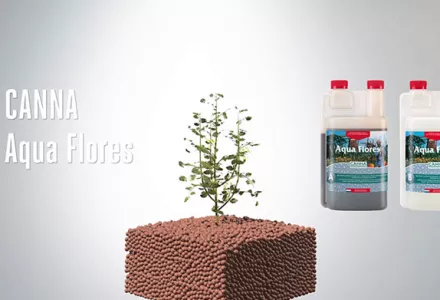Hydroponic cultivation systems are tremendously popular, and are likely to become even more so. Hydroponic systems are suitable for both small and large-scale use. Direct control options mean higher yields where correct nutrients are used. With the current sophistication of measuring equipment and technological advancements in the industry as a whole, the future appears bright. Hydroponic systems have even been developed to provide astronauts with fresh food during expeditions to Mars.

The word hydroponics comes from the Greek words hydro (water) and ponos (to work) and literally means ‘water work’. The first hydroponic systems come from antiquity. In fact, The Hanging Gardens of Babylon, and the floating gardens of the Aztecs in Mexico were the first hydroponic systems. Thanks to the continuous flooding in the area, it was possible to cultivate food the whole year round
The basis for the modern hydroponic system was laid after the experiments that took place from 1865-1895 done by German scientists Von Sachs and Knop. They discovered that plants needed certain nutritional elements to develop.
The first successful hydroponic systems were developed in the thirties by Dr. Gericke in the American state of California. During the Second World War these systems were adapted to provide American soldiers with fresh vegetables. The first hydroponic systems were adapted for commercial purposes for the production of vegetables and flowers in the seventies and eighties.
Hydroponics, cultivation without soil

Growing with hydroponics is a method of growing plants without soil, in which all the nutrients are supplied via the water. A distinction can be made between ‘real’ hydroponic systems in which plants are cultivated without using substrate (NFT, aeroponics) and hydroponic systems that use a substrate (rock wool, perlite, and clay pebbles). The type of nutrient that must be used depends on the type of system. An important distinction can also be made between open and closed systems. In open cultivation systems (run to waste) substrate is continuously supplied with fresh nutrients, while the old is removed from the substrate by the drainage system. In a closed or re-circulating system the nutrients aren’t removed by the drainage system, it is collected and supplied to the plants again. This is particularly useful if no substrate is being used in cultivation or if the substrate retains relatively little moisture (baked clay pebbles and perlite).
It is very important in hydroponic cultivation systems that the nutrient solution contains all the necessary elements that the plant needs in the correct proportions. The most suitable type of system depends on the grower’s preference and experience.
Hydroponics, pros and cons
| Open systems (run-to-waste) | Closed systems (recirculating) | |
| Pro | Easier to control as the plant receives fresh made nutrient continuously. Also suitable for low quality tap water (EC of 0,75 or higher). |
No systems drain necessary for used nutrients. Lots of air available for the roots when the proper substrate is used. |
| Cons | Higher loss of water and nutrients. Needs to be flushed away. |
Diseases can spread trough the entire system by recirculating nutrients. pH and EC levels have to be monitored. |
| Nutrient | CANNA Substra | CANNA Aqua |









